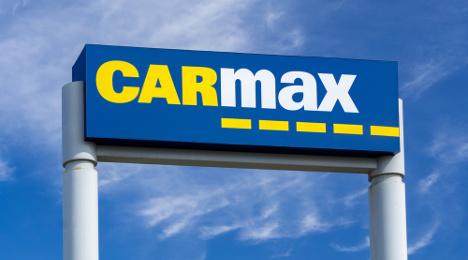AutoNation chairman and chief executive officer Mike Jackson is confident two of the most important used-vehicle performance metrics — volumes and gross profit per unit — will both improve during the second quarter.
According to AutoNation’s first-quarter figures shared on Tuesday, the dealer group reported gains in retail volume but softening in gross.
As a whole, AutoNation retailed 60,608 used vehicles in Q1, up by 2,505 units or 4.3 percent year-over-year. When looking on a same-store basis, the retail figure improved slightly more; up by 5.7 percent as those operations moved 59,131 units.
The gross profit on those units is where AutoNation took it a bit on the chin in Q1.
Overall, AutoNation said its gross profit on used-vehicle retail sales dropped by $377 or 23.4 percent to settle at $1,236. The same-store metric was about the same, sinking by 23.8 percent or $389 to come in at $1,243.
“During the first quarter, we saw increasing used unit volumes as we focused on our One Price strategy, which is now fully rolled out at all AutoNation stores, and worked through the majority of the inventory that was previously on recall hold,” Jackson said in a news release.
“We expect to see a sequential increase in the second quarter in both used unit volumes and gross profit per vehicle retailed,” he continued.
Looking at the top-line performance, AutoNation reported Q1 net income from continuing operations came in at $98 million, or $0.97 per share. A year earlier, it was $96 million, or $0.90 per share.
The dealer group added that its Q1 revenue of $5.1 billion and gross profit of $820 million were relatively flat compared to the year-ago period.
Also of note from AutoNation’s Q1 report, the dealer group indicated that its overall F&I gross profit per unit also stayed nearly flat year-over-year, coming in at $1,625.
Furthermore, AutoNation retailed 75,798 new models during Q1; an amount off by 3,209 units or 4.1 percent year-over-year.
After articulating various points about what he’s so upbeat about the dealer group’s used-vehicle department current and future performance, Lithia Motor president and chief executive officer Bryan DeBoer staunchly defended how the company is fending off what the investment community is seeing as would-be challengers that operate solely online.
During Lithia's latest conference call, when it highlighted its first-quarter results — which included nearly 31,000 used-vehicle retail sales — one participant didn’t mention the online retailer by name but made an insinuation regarding Carvana since that operation recently rolled out plans for an initial public offering. When the questioner asked how Lithia can compete with retailers such as Carvana that function online and go to the potential buyer where they are, DeBoer began by stating, “Lithia Motors is already there.”
DeBoer said the dealer group “probably” sells 40 percent of its used vehicles via what he called “end-to-end solution.”
He continued by saying, “I really believe that auto retailers have built a model that’s an end-to-end solution, where it’s a living room to living room model. We have applications, we have websites, and we have the inventory to do that and we do it at a profitable level, an extremely profitable level.
“And I think when you start to think about sector killers, or people that could modify what the used car model is, I think you need to go back and look at what’s occurred in those segments and understand that auto retailers and especially Lithia Motors that is very adept at selling used vehicles that’s built into who we are and has been built in for the last decade or so,” DeBoer went on to say.
“And I think most importantly, remember, the top of the food chain is the new car trade-ins, OK. And that’s something that used car retailers aren’t at liberty to have, which is what creates that waterfall effect,” he added.
Certainly Lithia could end up with a sizeable amount of trades since the dealer group reported that it retailed 35,616 new models during the first quarter, representing an 8.8-percent lift year-over-year. DeBoer noted that if a Lithia store doesn’t have particular pieces of used inventory that managers deem to be necessary, he’s encouraged by the opportunity to procure those units via wholesale channels.
“The past half-decade of results have been stunted by the lack of vehicle supply, a trend which is finally reversing,” DeBoer said during his opening remarks.
“We’re pleased to see that that supply chain is getting a little looser,” he added later in the conference call. “And with those people out there now understanding what vehicles to procure and which ones build demand from our consumer base, we’re going to continue to build upon that positive impact of supply increase.”
DeBoer also mentioned that Lithia likes to keep between one and two months’ worth of used inventory at its stores. He believes that’s the correct level to push each store toward the goal of retailing at least 75 used vehicles each month.
Update on acquisition activity
Lithia certainly has been active on the acquisition front during the past couple of years, including the procurement of DCH Auto Group in the summer of 2014 and then the Carbone Auto Group last September.
DeBoer did more than hint that the company is far from done expanding its footprint.
“I think when we think about acquisitions at Lithia Motors, this is something that perpetuates in each and every leader in the organization, here in Medford or in the stores,” DeBoer said. “It’s a day-to-day process that each of us are looking for growth opportunities.
“If we look at the physical market, it is the most robust market that we probably ever seen,” he continued. “We believe that pricing is starting to equalize where sellers are asking relative prices to what buyers can be expected or willing to pay and I believe that the coming quarters and years will be a good acquisition climate.”
DeBoer pointed out that the amount of cash Lithia generates annually — $200 million to $300 million — gives Lithia the flexibility to make the moves it chooses. Furthermore, he said Lithia is seeing synergies of blending together its portfolio of stores.
However, the Lithia boss reiterated that it’s an ongoing process.
“We want to build market share, we want to build stability and we want to build those margin improvements and those revenue growth over a period of time,” DeBoer said. “To be fair, it can take two, three, four, five years to be able to build upon that foundation, which is what creates that organic dry powder which allows us to continue to grow our same store sales to reach potential within those new acquisitions. It just takes some time.”
On new-vehicle incentives
Another hot topic DeBoer addressed stemmed from incentives being slapped onto new-vehicle deliveries. Auto Remarketing highlighted the recent analysis from Kelley Blue Book and ALG that mentioned average incentive figures above $3,500 in March.
DeBoer didn’t sound an alarm about what cash is being slapped on the hood or other carrots automakers might be using to get consumers into a new vehicle.
“I think we are not seeing large changes or any type of scenarios that we believe in the next coming quarters are going to change dramatically,” he said. “We typically see pretty stable incentives throughout the summer months. As we begin to move into the fall is when incentives start to accelerate.
“I think as we start to look at the build of vehicle, we’re obviously still overproducing for what the current SAAR run rates are, which does lead to those incentives,” DeBoer continued. “But fortunately we’ll be able to be rewarded for those if our inventories are in a controllable position, whereas each individual market can respond separately based of the value proposition that each of those individual stores has created for their individual markets and the consumers.”
Fueled in part by its used-vehicle department performance, Lithia Motors reported the highest first quarter revenue and earnings per share in company history.
To get to those achievements, Lithia said on Wednesday that its used-vehicle retail same store sales increased 6 percent as the dealer group turned a total of 30,783 units during Q1, representing a year-over-year lift of 3,352 units.
That used volume gain helped to overcome deterioration in gross profit per unit. Lithia reported that its gross on used retail sales dipped by $109 year-over-year to $2,234.
Also helping the company cause was Q1 F&I gross profit ticking up $17 compared to the same time period a year ago to land at $1,307.
However, it’s the top-line metrics that prompted Lithia leadership to cheer.
The company said its Q1 unadjusted net income per diluted share increased 30 percent year-over-year to $2.01 from $1.55. Adjusted net income per diluted share increased 15 percent to $1.78 from $1.55.
Lithia’s Q1 unadjusted net income increased 26 percent to $50.7 million from $40.3 million. Adjusted net income increased 12 percent to $45.0 million, up from $40.4 million.
The company went on to highlight its Q1 revenue jumped 13 percent to $2.2 billion from $2.0 billion.
A few other year-over-year highlights included:
—Total same store sales increased 3 percent
—Service, body and parts same store sales increased 8 percent
—SG&A expense as a percentage of gross profit was 71.1 percent
“Through a disciplined acquisition strategy and strong operational execution, we’re pleased to report our 26th consecutive quarter of record earnings per share,” Lithia president and chief executive officer Bryan DeBoer said. “We grew revenue 13 percent and adjusted earnings 12 percent over last year and a significant number of stores still have ample opportunity to improve.
“Since 2010, we have grown our revenue four-fold and our EPS seven-fold, all while currently maintaining a leverage ratio of less than two,” DeBoer continued. “The ability to flex our balance sheet coupled with our free cash flow provides capacity to continue acquisitions at a similar or accelerated cadence in 2017 and beyond.”
Lithia’s expectations are for its used department to maintain the pace it set during the first quarter.
The company’s guidance projects used-vehicle same-store sales increasing 5.5 percent and used-vehicle gross margin to come in at 11.5 percent to 11.7 percent.
Also of note on the used side, Lithia wholesaled 10,840 units during the first quarter, up by 1,327 units or 13.9 percent year-over-year. The average selling price for those wholesaled units softened by $252 to settle at $6,596.
Pre-owned Tesla Model S vehicles sell notably faster than some of its U.S. counterparts’ best-selling used models, according to Autolist.
The firm recently released a study that delved into used Tesla vehicles’ overall market performance relative to those of General Motors and Ford.
The pre-owned Model S averages 87 days on market, 5 percent below its peer group, reports the buyer intelligence firm’s study titled, Changing of the Guard: Tesla vs GM & Ford. That peer group includes the Audi A7, Porsche Panamera, BMW 6 Series, Mercedes-Benz CLS, and Lexus LS 460.
The top used models from GM and Ford — the Ford F-150, Chevrolet Silverado 1500, Chevrolet Malibu and Ford Fusion — spent between 88 days and 104 days on the market.
Additionally, the Model S also has higher pre-owned prices relative to expectations than top-performing GM and Ford vehicles.
Prices of the Model S have trended between 3 percent and 5 percent above expectations for the past year.
Meanwhile, prices for the top-performing used GM and Ford models have trended within 1 percent (above or below) expectations throughout the past year,
To compile this study, Autolist’s analysts took a look at more than 10 million vehicles from April 2016 to January.
“One thing important to understand about our study is — why we think its impactful — is because it’s a comparison relative to a peer group. And that’s a really important element of this analysis because if you’re just comparing raw numbers overall, you can control a cross segment,” Alex Klein, vice president of data science at Autolist, said in a phone interview with Auto Remarketing.
“But what this is really about is … Tesla’s performance relative to its competitors and Ford and GMs performance relative to its competitors. And when you think about things through that lens, that is really what drives brand perception, market value, investment financials, and so on and so forth.”
With the next Tesla model — the Model 3 — set to debut later this year, Klein said the brand's performance in coming years could be determined by the reception of this model, which would be its first mass-market vehicle.
“They have thus far just been a luxury market loyalty group,” he said. “And so when you introduce a mass-market vehicle at scale, there are a lot of potential benefits to getting more people involved with what is an incredible brand at a baseline level.”
According to a J.D. Power report released last month, drivers who purchase the brand’s lowest-price sedan are less likely to be comfortable with any technology-related snags.
Klein said, “Getting the Model 3 involved will get more people to engage with the Tesla brand and could potentially even further accelerate their performance relative to competitors as more car buyers are able to move from a traditional petroleum powered car to an electric vehicle.”
He said Tesla customers are likely to become interested in buying EVs over the long-term, which again has benefits for Tesla, but could also have benefits for other EVs on the market in the future, too.
“When you are buying a Tesla you are buying a next-generation automobile. There’s a perception that people are pushing the bounds of technology and they are being part of the forerunners of next-generation technology whenever they step foot in a Tesla,” Klein added.
More info on the study can be found here.
The American International Automobile Dealers Association reported that average length of time a new model sat on a dealer’s lot hit 70 days in March — the longest stretch of time since July 2009. Edmunds contends current new-vehicle inventory levels haven’t been this high since 2004.
Cox Automotive chief economist Tom Webb sees the assertions from AIADA and Edmunds stemming from franchised dealers starting both February and March with more than 4 million new units in stock as a headwind for both used- and new-vehicle sales.
Webb explained that hefty incentives were applied to that new-model inventory — a move that eventually places pressure on used-vehicle values — and the industry achieved a seasonally adjusted annual selling rate (SAAR) of 17.5 million in February. The strategy repeated in March, but the new-model SAAR fell to 16.5 million — the lowest reading since February 2015.
“Last month’s weak sales pace, plus less-than-needed production cuts, has left dealers with still too much new metal on the ground,” Webb said.
During his last quarterly conference call, Webb elaborated about where he thinks a healthy new-vehicle sales pace can be that leaves the used-vehicle segment with plenty of retail room to maneuver.
“I think if you look at it from a very long, long trend what you might term the underlying demand for new vehicles — the current vehicles in operation plus scrappage — I don’t think it’s that much north of 16 million going longer term. So the SAAR at some point has to move down below 17 million. But again it’s dependent upon what real retail demand there is out there,” Webb said.
“The fact that dealers have 4-plus million new vehicles in stock is the pressure on used-vehicle values. Obviously that’s too many,” he reiterated.
While used-vehicle production certainly can be attributed to situations such as trade-ins and off-lease returns, Webb acknowledged automakers have difficult challenges in managing factory production.
“A production adjustment has to be made with the sales pace in March being a disappointment,” Webb said. “We didn’t make a lot of the progress in terms of getting new-vehicle inventories in line. There’s still an overhang. To the extent the manufacturers produce to demand, then you don’t have that downward pressure on used-vehicle values. To a certain extent, I’m still hopeful that is what they will do.
“I’m somewhat surprised they’ve left their dealers holding that much inventory for such an extended period of time now rather than adjust,” he went on to say. “I know some of it has to do with imbalances and production schedules etc. But still, it is not a good thing for them since they also hold the residual values on 10 million leases out there.
“It’s not good for the manufacturers and it’s certainly not good for the dealers,” Webb added.
Update on rental-risk prices & volume
Manheim reported the average price for rental risk units sold at auction in March remained down 3 percent year-over-year. Webb explained prices were up relative to February, but less than the normal seasonal pattern would indicate.
Webb went on to note that a straight average of auction pricing for rental risk units in March represented a 3.5-percent rise from a year ago, “reflecting a better mix of market classes and lower mileage.” He added that SUVs and CUVs accounted for 33 percent of rental risk sales in March of this year versus only 25 percent last March. The share accounted for by compact cars fell from 29 percent to 25 percent.
Manheim also pointed out that average mileage for rental risk units in March (36,800 miles) decreased by 10 versus a year ago.
“Rental risk volumes sold at auction in the first quarter were up considerably, even compared to last year’s high level,” Webb said. “Unlike last year when dispositions were being driven by a high number of new units’ entering the fleet, this year’s off-rental volume was more the result of fleet rationalization. As such, off-rental auction volumes may weaken later in the year.”
Webb also touched on how the best of off-rental units aren’t necessary being skimmed off by rental car companies and being wholesaled other places than having those units come down the lanes.
“There was fear as the rental car companies used non-auction channels — direct to dealer sales and retail customers — that the auctions would end up with the higher mileage poor condition vehicles, the less desirable vehicles. But that has not been the case,” Webb said.
“I watch it very closely with the types of vehicles that come through our auctions and the condition levels. We’re not skewed in any way along those lines so that’s heartening,” he continued.
Meanwhile as those new-vehicle inventories pile up, Webb pointed out that OEMs aren’t falling back into previous practices by sending more units into the fleet space. Manheim determined that the combined rental, commercial fleet and government purchases of new vehicles decreased by 13 percent year-over-year in March, with the “all-important” rental segment down the most at a 14 percent decline.
“Granted, that was relative to a very high level a year ago,” Webb interjected.
“Certainly in the way past, basically when you had a lot of program cars, that was an avenue,” he continued. “Even when the manufacturers had ownerships in the rental car companies, you could use that as an avenue to keep factories open.
“Given the restructuring i.e. the bankruptcies that occurred during the recession, the manufacturers have a lot more flexibility in terms of production and in terms of making labor a more variable cost than a total fixed cost,” Webb went on to say. “To that extent, there’s less of a need to do that. Certainly they got burned in the past doing it. So to a large extent, most have not done that.”
And what about rental car companies working deals with the automakers?
“You look at the rental car companies and they’ll tell you they’re not getting that great of a deal in terms of the pricing,” Webb replied. “Certainly there’ll be a manufacturer of a particular model that will put a little pressure on the rental car company to take some of those units to even things out. But in the overall scene, they’re not overly pushing the market, which is a good thing.”
Following the first-quarter, the growing demand for light trucks over cars will continue to be noticeable, but this will likely be more of a quandary for creditors rather than dealers, says National Automobile Dealers Association chief economist Steven Szakaly.
“The falloff in those sedan prices and then the returns of those leases are much more of an issue for finance companies than they are actually for the retail body,” Szakaly said during a media conference call on Wednesday where he and NADA chairman Mark Scarpelli shared insights on the overall economy following the first quarter.
Sedans have lost about 12 percent market share so far this year, and trucks have gained a little above 7 percent, according to Szakaly.
“This is just a continuing story that we see consumers switching to the utility of crossover vehicles, sport-utilities and other light trucks — choosing those over the sedan segment,” he said. “The used-car business remains strong. Sedans are under pressure and clearly we’re seeing that sort of used-car pricing starting to certainly become more negative as a lot of these off-lease vehicles are coming in, but these are manageable issues I think for this industry.”
Szakaly predicts overall new-vehicle sales will total 17.1 million vehicles this year.
“We have economic growth that continues to be what we say is moderate. We are looking at growth here in the first quarter right around 2 percent, forecasting 2.1 percent — still below trend and still below what we’d like to see in terms of economic activity above 2 and a half or even closer to 2 percent,” he said. “What continues to be a net positive is employment, employment growth continues to be strong with plus 200,000 thousand jobs being created in January and February.”
Though the total number of U.S. jobs have seen an increase in recent weeks, wages themselves have remained stagnant and that has a significant impact on the used-car market in particular because consistently high wage earners tend to buy new, he explained.
“Slightly on the negative side, we’ve got this lack of wage growth overall and that continues to be one of the fundamental troubling factors," Szakaly said.
"With the economic growth that has continued here since 2009, wages have not been rising and they haven’t kept pace with some of the rise in prices.”
Despite a decrease in the purchase of sedans overall, customers who can afford their desire for small luxury vehicles are likely to make a purchase this year, according to a recent Jumpstart Automotive Media study that analyses consumers’ car shopping behavior, as well as what segments of vehicles are either gaining or losing traction.
Sedans within luxury-vehicle segment sales grew 7 percent from 2015 to 2016, and shopper interest for midsize and full-size luxury sedans rose over 10 percent, according to the study.
“As long as people are working they are going to be looking at buying new vehicles and used vehicles,” Szakaly said.
CarMax closed its fiscal year by reporting on Thursday that its total unit sales climbed 13.4 percent during the fourth quarter and 8.3 percent for the 12-month span.
According to its latest financial statement, CarMax retailed 176,017 units in Q4 and 671,294 units during the fiscal year that concluded on Feb. 28. Within the wholesale side of its business, CarMax’s auction division sold 91,143 units during the fourth quarter and 391,686 units in the fiscal year, representing year-over-year dips of 1.2 percent and 0.7 percent respectively.
And in its segment that buys vehicle installment contracts, the company reported that CarMax Auto Finance (CAF) income declined 10.2 percent to $82.9 million in the fourth quarter. For the fiscal year, CAF income softened by 5.9 percent to $369.0 million.
All told, CarMax reported that its net sales and operating revenues increased 9.3 percent to $4.05 billion in the fourth quarter. For the fiscal year, the company tabulated that its net sales and operating revenues increased 4.8 percent to $15.88 billion.
In the fourth quarter, CarMax said its net earnings increased 8.2 percent to $152.6 million and net earnings per diluted share rose 14.1 percent to $0.81. The company explained year-over-year comparisons were affected by a previously disclosed impairment-related charge of $5.2 million, net of tax, or $0.03 per diluted share, which reduced the prior year’s fourth quarter results.
For the fiscal year, the company added its net earnings increased 0.6 percent to $627.0 million and net earnings per diluted share rose 7.6 percent to $3.26.
More details about Q4 performance
While CarMax noted that its total used-vehicle unit sales grew 13.4 percent in Q4, the company also pointed out that its comparable-store sales rose 8.7 percent year-over-year.
“The comparable-store sales performance resulted from a strong increase in conversion, together with a modest increase in store traffic,” the company said.
For the non-Tier 3 customer base — what CarMax considers to be its prime credit buyer segment — comparable store used unit sales rose 15.3 percent.
“We continued to experience a headwind related to our third-party Tier 3 sales mix,” the company said about this segment that declined to 9.4 percent of used unit sales from 14.5 percent in the prior year’s fourth quarter.
“Tier 3 sales represent those financed by our third-party finance providers to whom we pay a fee,” CarMax continued.
“Credit tightening by our third-party Tier 3 finance providers earlier this year, a continued reduction in credit application volume from customers at the lower end of the credit spectrum and a delay in payments of federal income tax refunds in February, all contributed to the decline in Tier 3 mix,” CarMax went on to say.
Touching on its wholesale activities, CarMax explained why Q4 unit sales softened by 1.2 percent year-over-year.
The company said the performance reflected, “Contributions from the growth in our store base and an improved appraisal buy rate were more than offset by a reduction in appraisal traffic. In particular, age 7- to 9-year old wholesale vehicles continued to be in shorter supply.”
CarMax also shared its gross profit per unit figures for both its retail and wholesale operations.
On the retail side, the Q4 figure stayed “largely consistent,” according to CarMax, at $2,134 per unit versus $2,109 per unit in the prior-year period.
On the wholesale side, the per-unit figure dropped by 7.8 percent year-over-year during the fourth quarter, settling at $938 compared to $1,005 a year ago.
Finally over at CarMax Auto Finance, officials attributed 10.2 percent income decline primarily stemmed from a $15.4 million increase in the provision for loan losses, “which resulted from both higher loss experience in recent quarters and the growth in managed receivables, as well as an update in our assumptions for determining the loan loss allowance.”
CarMax Auto Finance indicated its average managed receivables grew 11.5 percent to $10.54 billion. The total interest margin, which reflects the spread between interest and fees charged to consumers and its funding costs, declined to 5.7 percent of average managed receivables from 5.9 percent in last year’s fourth quarter.
The company also mentioned the allowance for loan losses as a percentage of ending managed receivables was 1.16 percent as of Feb. 28, compared with 0.99 percent as of Feb. 29, 2016 and 1.10 percent as of Nov. 30 of last year.
Four automakers posted new all-time highs for monthly certified pre-owned sales in March; a month where Autodata Corp. determined the industry turned the second-highest amount of CPO units ever.
And perhaps the industry will need other OEMs to join that performance level in order to keep up with the volume of off-lease vehicles hitting the wholesale market.
Autodata reported that four automakers — Fiat Chrysler, Kia, Maserati and Nissan — closed the first quarter with their highest CPO sales total ever for a single month. The firm indicated Fiat Chrysler turned 23,266 certified units as Nissan moved 18,509 CPO models. Kia recorded 7,513 certified sales as Maserati turned 79 CPO models.
In fact, Autodata mentioned to Auto Remarketing that Fiat Chrysler’s CPO sales total compiled during the first quarter also set an all-time high for the OEM, as its franchised dealers retailed 58,398 units.
All told, Autodata reported that dealers retailed 243,277 CPO units in March, off by just 0.3 percent year-over-year when the all-time sales record was established. That’s when the industry delivered 243,944 certified models.
The March figure also soared past the CPO sales total recorded during the previous month by 15 percent.
For the quarter, Autodata indicated the CPO sales figure came in at 647,373 units, edging 0.1 percent higher compared to the first quarter of last year. The amount also was 0.8 percent higher than the fourth quarter of 2016.
Analysts pointed out that there were 27 selling days in March of this year and last year as compared to just 24 in February of this year. The March sales figure computed into a daily selling rate was 9,010, according to Autodata.
Looking deeper at the March data on a year–over-year basis, analysts noticed that domestic brand share fell 1.8 percentage points to 35.4 percent, as European share increased 1.2 points to 16.3 percent. Autodata added the Asian share edged up 0.7 points to 48.3 percent.
No matter which brand has share, Edmunds senior analyst Ivan Drury explained to Auto Remarketing that it appears OEMs and their dealers are going to have to keep this record or near-record setting pace in order to keep off-lease units from sitting in inventory for too long.
“While we've seen a consistent rise in off-lease each year, it appears that CPO sales are not trending as closely with off-lease as once predicted,” Drury said. “This could be an indicator that we’ve begun to saturate the market.
“CPO, on an overall level, is utilized as a way to distinguish and show differentiation from the rest of the used market, but as we have waves of relatively new vehicles of similar trim levels and mileage, it could be less of a selling point and just seen as added cost when there are so many comparables,” he continued.
Kelley Blue Book managing editor Matt DeLorenzo also looked cautiously at the relationship between off-lease wholesale volume and CPO retail trends.
“The glut of off-lease vehicles needs to be managed carefully because these are the units that provide most of the CPO inventory, thanks to annual mileage caps that make these vehicles more desirable and easier to warranty than high-mileage units,” DeLorenzo said. “These CPO units really don’t prime new-vehicle sales other than being able to flip the current lessee into a new vehicle. That used unit as a CPO becomes an entry-level vehicle to a buyer who may not be able to afford a new model of a particular brand.
“If incentives become so heavy that those buyers are able to actually afford a new vehicle, then yes, there will be an impact,” he continued. “However, manufacturers have the opportunity to manage their off-lease volume by storing cars (that’s already happening) to keep inventories down and prices and margins up. Dealers are more than happy on this count because their margins are usually greater on CPO than new vehicles.”
And as DeLorenzo mentioned, the incentive moves automakers are using to turn new models could leave a rippling impact over to the used department trying to retail CPO units.
“There is no question that huge rebates will have an effect on the used-car market, and CPO vehicles will not be immune to those pressures,” DeLorenzo said. “That said, there’s more to the CPO proposition than just price. Some rebates may be on only the entry-level versions of a particular model or may be offered regionally. A buyer may still opt for a better equipped CPO car that could come in at or just under the price of an all-new car with less equipment. And that’s not to say that makers will be looking to re-lease their CPO cars at attractive rates (this is a small slice of the market, but it could grow) or offer other non-cash incentives and spiffs like extended warranties and subsidized financing to make the CPO deal compelling.
“Still, we are likely to see prices trending downward on both CPO and non-CPO vehicles over the next year as some 3.1 million vehicles are expected to return to the market off-lease,” he continued. “However, overall CPO volumes may remain fairly stable because as a marketing tool these programs are expanding, so the growth in CPO with manufacturers offering or expanding their programs will probably mitigate against a dramatic drop-off in CPO activity.”
Drury also touched on how consumers are weighing the option of purchasing a CPO unit versus a new model, especially one that might have a substantial amount of cash on the hood.
“Consumers who shop both new and used/CPO vehicles are research-intense and tend to spend much greater amounts of time gathering information and searching inventory than those who strictly shop new or used,” Drury said. “Some of this stems from simply having more options, but for a consumer looking to get the best bang for their buck comparing used, CPO and new is vital.
“That said, each consumer also has a number in their head at which point the price premium for a new vehicle over a used/CPO is justified,” Drury went on to say. “Factoring in incentives does add a bit of complexity, but for vehicles with steep new-car discounts there is a much greater chance at hindering the ability to sell a CPO unit or even a standard late model used vehicle.”
Analysts who compiled White Clarke Group’s United Kingdom Asset & Auto Finance Survey 2017 say that the U.K. finance market has been resilient in the face of historic changes in the past year, but challenges will remain in 2017 and beyond.
The firm noted its survey points to a series of key factors that will have the greatest impact on the market, including:
• Brexit
• Legislation
• Vehicle sales (new and used)
• Residual values growing demand for PCH
• New technology and innovation
• P2P lending
“The first and most encouraging point to note is that the asset and auto finance market not only continued to grow in 2016, in spite of fears of what might happen in the aftermath of the vote to leave the EU and wider concerns about the global situation, it has carried on growing into 2017 and shows little sign yet of slowing,” White Clarke Group chief executive officer Brendan Gleeson said in the report.
“Nonetheless, there are genuine concerns about the potential effects of Brexit, even though the Article 50 starting pistol has only just been fired and the UK won’t be exiting the EU until 2019,” he continued.
Gleeson went on to say, “One outcome is that auto finance deals are expected to remain very competitive. Dealers need to ensure customers genuinely understand the benefits of finance. Keeping up with developments in finance technology is paramount.”
The complete survey report can be downloaded here.
Autodata Corp. determined the industry in March turned the second-highest amount of certified pre-owned vehicles ever.
According to information shared with Auto Remarketing, dealers retailed 243,277 CPO units in March, off by just 0.3 percent year over year when the all-time sales record was established. That’s when the industry delivered 243,944 certified models.
The March figure also soared past the CPO sales total recorded during the previous month by 15 percent.
For the quarter, AutoData indicated the CPO sales figure came in at 647,373 units, edging 0.1 percent higher compared to the first quarter of last year. The amount also was 0.8 percent higher than the fourth quarter of 2016.
Analysts pointed out that there were 27 selling days in March of this year and last year as compared to just 24 in February of this year. The March sales figure computed into a daily selling rate was 9,010, according to Autodata.
Editor’s note: Watch for upcoming reports from Auto Remarketing highlighting the new, recording-setting CPO sales figures certain automakers as well as industry reaction to how the certified market is behaving.












